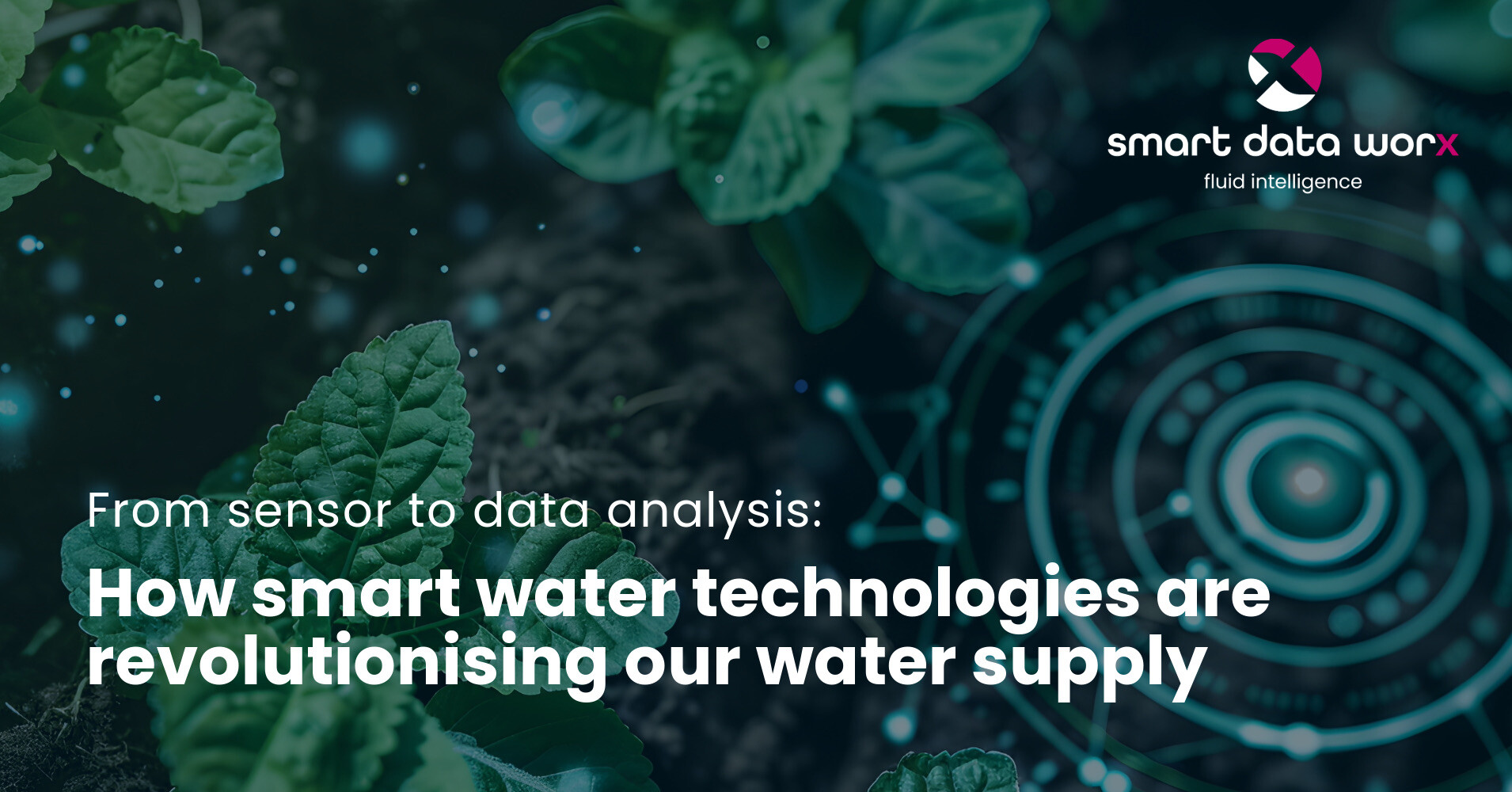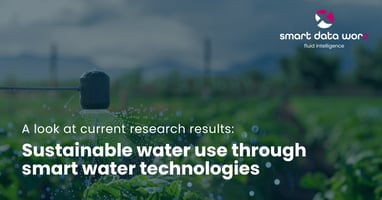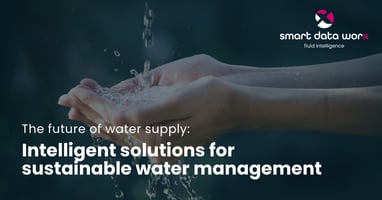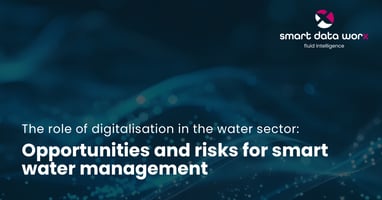The sustainable use of water resources has become a key challenge in view of global environmental...
From sensors to data analysis: how smart water technologies are revolutionising our water supply

Water supply is one of the essential services that supports daily life and the economy in all parts of the world. In recent decades, however, the industry has faced growing challenges, including population growth, climate change, ageing infrastructure and increasing demands on water quality. The introduction of smart water technologies, ranging from sensor technologies to big data analytics, has the potential to fundamentally change the water industry and address these challenges.
Sensor technologies: The foundation of the smart water revolution
Sensor technologies form the foundation of intelligent water systems. These sensors, which are installed in various parts of the water supply system, continuously record a variety of data points, including water flow, pressure, temperature, chemical composition and contamination. The most commonly used sensor types include
- Flow sensors: these measure the amount of water flowing through the pipes. This helps to monitor water consumption and detect leaks.
- Pressure sensors: These sensors monitor the pressure in the water pipes. A sudden drop in pressure can indicate a leak or other fault.
- Chemical sensors: They analyse the chemical composition of the water and detect impurities such as heavy metals, pesticides or bacteria.
- Temperature sensors: These sensors are important for monitoring water temperature, which can be critical in certain applications, e.g. in the food and beverage industry.
These sensors provide real-time data that can be used for immediate decisions and long-term strategies.
Big data analysis: from the raw data stream to decision-making
The collected data alone is not enough to make well-founded decisions. This is where big data analysis comes into play. By using advanced analysis tools and algorithms, large amounts of data can be processed and analysed in order to recognise patterns, identify anomalies and make predictions.
- Real-time monitoring and alerting: The continuous monitoring of data enables water supply companies to react immediately to problems. For example, algorithms that detect anomalies in pressure or flow data can trigger immediate alerts in the event of a potential pipe burst. In addition, sensors can be placed at strategic locations in the supply network to detect potential leaks or contamination at an early stage. This real-time monitoring also enables a rapid response to unexpected events such as natural disasters or human error, ensuring the continuity of the water supply.
- Predictive maintenance: Using historical data and machine learning, water utilities can make predictions about when and where problems might occur. This enables proactive maintenance and reduces downtime. Predictive analysis can not only prevent pipe bursts and pump failures, but also extend the service life of the systems. In addition, maintenance teams can be deployed in a more targeted manner, resulting in more efficient utilisation of resources.
- Optimisation of the water supply: Analysing consumption data can help to optimise the water supply. This includes identifying peak consumption times and adjusting the supply accordingly to avoid bottlenecks. The analysis can also help to identify inefficient or outdated infrastructure and replace it with more modern systems. This not only leads to cost savings, but also to a more sustainable and environmentally friendly water supply.
- Improving water quality: By analysing chemical data, water companies can identify trends and patterns in water quality and take action to ensure that water quality meets regulatory standards. In addition, continuously monitored sensors can be used to take immediate action in the event of pollution or chemical imbalances. The integration of data from various sources, such as weather forecasts and industrial activities, can help to recognise potential sources of pollution at an early stage and take preventative action.
Potential for the water industry
The integration of smart water technologies offers numerous advantages for the water industry:
- Increased efficiency: By automating monitoring and maintenance processes, water companies can significantly increase their operational efficiency. Automated systems make it possible to perform routine tasks such as checking pressure and flow data or analysing water quality in real time. This reduces the need for manual inspections and allows employees to focus on more complex tasks. In addition, the use of drones and robots allows hard-to-reach areas to be efficiently monitored and maintained, further increasing overall efficiency.
- Cost reduction: Early detection and rectification of problems can avoid expensive repairs and wasted water. By using algorithms to predict failures and identify potential weak points, maintenance measures can be carried out in a targeted and timely manner. This not only reduces the cost of emergency repairs, but also extends the service life of the infrastructure. In addition, automated systems can optimise water consumption and reduce unnecessary water waste, which also leads to cost savings.
- Sustainability: By optimising water consumption and reducing leaks, smart water technologies contribute to the sustainable use of water resources. Intelligent systems can monitor the flow of water in real time and automatically make adjustments to minimise leaks and optimise water consumption. In addition, water utilities can reduce their environmental footprint by utilising renewable energy sources and using energy-efficient pumps and equipment. In the long term, these measures help to conserve water resources and reduce environmental impact.
- Improved customer satisfaction: A more reliable water supply and better water quality lead to higher customer satisfaction. By using smart water technologies, water supply companies can respond quickly to customer enquiries and complaints, thereby improving service quality. In addition, by providing detailed consumption data and personalised recommendations, customers can better understand and optimise their water consumption. This not only leads to a better relationship between water suppliers and customers, but also to greater acceptance and support for sustainable water management practices.
Challenges and solutions
Despite the many benefits, there are also challenges that need to be considered when implementing smart water technologies:
- Data integrity and security: as connectivity and digitalisation increases, so does the risk of cyber-attacks. It is therefore important to implement robust security protocols to ensure the integrity and confidentiality of the data.
- High investment costs: The implementation of sensor networks and big data analytics platforms can require high initial investments. In the long term, however, the cost savings can justify these investments.
- Complexity of data integration: Integrating data from different sources and systems can be complex. It requires well thought-out strategies and technologies for data integration and harmonisation.
- Training and skills development: Staff must be properly trained to effectively utilise the new technologies. This includes technical training as well as training in data analysis and interpretation.
Conclusion
Smart water technologies offer a transformative solution to the challenges of modern water supply. By using advanced sensor technologies and big data analyses, water management can be made more efficient, cost-effective and sustainable. Sensors monitor various parameters of the water infrastructure in real time, while networked systems and the Internet of Things enable data transmission and processing. Big data analyses help to recognise patterns, identify leaks at an early stage and predict maintenance requirements. This not only makes it possible to optimise water usage, but also to monitor and improve water quality.
The potential is enormous: increased efficiency, cost reduction, sustainability and improved service quality are just some of the benefits offered by smart water technologies. However, challenges such as data security, interoperability, costs and technical expertise must be overcome. With robust security measures, standardised interfaces, economic analyses and targeted training, these hurdles can be overcome.
Overall, this blog post shows how smart water technologies can revolutionise the water supply and help to protect the valuable resource of water for future generations.


